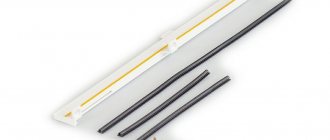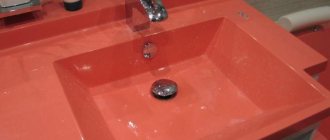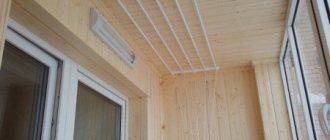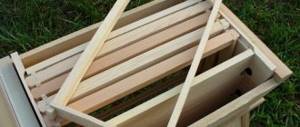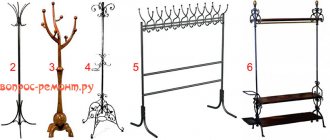Fast passage:
- Purpose of air control devices
- Types of ventilation valves and dampers
- Filters for ventilation
- Types of filters for ventilation
- Valve control systems
- Installation work
How to get a commercial offer?
"Prom Klimat" is a professional design and installation company. We implement the engineering systems of a building or premises at your site on a turnkey basis. Send your applications by email or call, and our engineer will prepare you our commercial offer.
Air control devices are used in ventilation to control air flow or to adjust equipment. This category includes plastic air valves for apartment ventilation, and giant heated and electrically driven mechanisms for industry. The effectiveness of air ventilation depends on the correct selection and placement of control devices.
Purpose of air control devices
Air dampers and valves for ventilation are used for:
- air flow control;
- blocking of ventilation ducts during system shutdown;
- debugging work;
- debugging air flow rates in ventilation ducts.
Air valves are necessary to stop the movement of air through the ventilation ducts when the system is stopped. Modifications of air valves for ventilation with adjustable stops (throttle valves) that change the air flow have been developed. Standard type throttle valves are installed in air ventilation systems with a pressure of no more than 1500 Pa and a concentration of mechanical impurities of up to 100 mg per cubic meter.
It is advisable to install air valves in systems with an air temperature no higher than 800 degrees Celsius and an aggressive environment comparable to the quality of atmospheric air. In regions with cold climates, models with electrical heating have been developed for ventilation of air compressor rooms.
Air dampers for ventilation regulate the volume of supplied air in ventilation systems.
Purpose of a check valve in ventilation
As for simple ones that do not have exhaust fans and hoods in their design, so for technically complex ventilation systems, the situation when the air flow changes its direction to the opposite direction occurs very often.
Strong winds, improperly located inlet and outlet ducts on the roof, the presence of several fans - all this can lead to a phenomenon called backdraft.
Most often, natural ventilation systems suffer from this, where the air flow is driven by temperature differences. Suffer from changes in the direction of flow and hoods connected by a common air duct.
As soon as you turn on the fan in an apartment on the lower floors, air instantly penetrates from the ventilation duct into the vents of the upper floors.
Technically, solving the problem is quite simple: you need to install a device (and this can be done with your own hands), which instantly blocks the cross-section of the air duct when the pressure in the ventilation duct increases.
Conversely, when signs of movement of air masses from the room into the air duct system appear, a passage quickly opens.
In household ventilation systems, the use of a check valve is most often associated with kitchen hoods, where a powerful flow is created by the operation of an exhaust fan.
For rooms connected by one ventilation duct, a check valve is installed in each vent - this prevents odors from entering the room when one of the fans is turned on.
In addition, the presence of such a device in the system makes it possible to protect the room from penetration through the ventilation duct, in addition to unpleasant odors, also dust, insects and water vapor.
Types of ventilation valves and dampers
The main types of air control devices are air valves and dampers. Not a single ventilation system, be it an air compressor room, an office building or an entertainment complex, can do without these mechanisms.
According to their form and function, ventilation air valves are:
- round;
- rectangular;
- reverse;
- fire protection;
- smoke removal.
Round valves for ventilation
They are used in air ducts of round cross-section and are made from galvanized sheet metal 0.5 - 1 mm thick, resistant to moisture. The design of the valves consists of a round metal body and a damper. The damper is controlled by a mechanism located on the side. If the damper position is adjusted manually, the model name contains the letter “P”, if a pneumatic drive is connected – “P”, an electric drive – “E”.
For small-diameter air ducts, manually operated air ventilation dampers are more convenient. Large diameter valves are controlled electrically. Such valves change the intensity of air flow or completely block its movement when the system is stopped. The valve flap can be held in the required position. It is covered hermetically and allows no more than 10% air to pass through, since it is equipped with a seal around the perimeter.
When adjusting the pressure, the damper is set in a certain position. Round air valves for ventilation in apartments and in production are produced with diameters of 25 - 125 cm. They are produced in standard lengths of 5 - 7 cm, depending on the diameter. And the throttle valves are 23.5 – 123.5 cm. According to GOST, they can be operated at temperatures of -30... +400 degrees Celsius, covered from snow and rain.
Rectangular ventilation valves
They are installed in rectangular air ducts and are used at temperatures of -30... +70 degrees. The main material for their production is sheet aluminum; rectangular dampers are sealed with a rubber band. In accordance with the name, a shut-off control valve can change the flow intensity or completely block it.
The smallest rectangular throttle valves are available with a diameter of 15 x 15 cm, the largest 100 cm x 100 cm. For non-standard air ducts, valves are made to special order. Since throttle valves can be a source of noise, it is not advisable to install models with a diameter of more than 500 mm in residential, medical and public buildings. The valve is mounted in the air duct with a flange and nipple connection, and a round one with a band connection.
Electrically heated valves SVK-NS are produced in rectangular shape. This is a body with rotating blinds, at the joints of which there are heating tubes (electric heating elements). They prevent freezing of joints
Fire ventilation valves
Such valves are also called fire-retardant and are installed in general ventilation systems. Together with the air seal system, ventilation is mandatory according to the requirements of the fire inspection. Necessary for tightly blocking channels leading through partitions, ceilings and walls of one floor. Fire dampers stop the spread of combustion products and fire through air ducts from one room to another. To reverse the movement of smoke in the opposite direction, air valves are designed in the ventilation system. They prevent the penetration of fire and smoke from the lower floors to the upper ones and are actually a downward branch of the air duct. Fire-retarding valves are controlled via an electric drive with remote control or automatically. The valve is equipped with a thermal sensor that transmits a signal via an electromagnetic drive to a spring lock, which closes the valve. Such valves are installed in premises of category “B” due to explosion hazard. In rooms “A” and “B” only explosion-proof valves are used.
Smoke exhaust valves
Such equipment is installed in smoke ventilation ducts. The valves are located in the openings of the separating structures. Smoke exhaust air valves quickly remove smoke and combustion products from the fire zone, similar to ventilation air valves, and reduce suction into the smoke exhaust duct from fire-free floors. Thus, smoke removal is accelerated and fresh air is supplied to the premises.
Check valves for ventilation
Their difference is the presence of a spring that automatically closes the damper and cuts off the air supply in the opposite direction. Check valves for ventilation are installed in the air duct using nipple fastening. They are made of steel with anti-corrosion coating, and the damper is made of sheet aluminum. All check air valves for ventilation are general purpose and explosion-proof. Installed in a vertical or horizontal position depending on the direction of air movement. Explosion-proof check valves for air ventilation offer enhanced protection against fire and sparks. Available in rectangular and round shapes, they are also used for air compressor ventilation.
Butterfly check air valves are distinguished by the central location of the axis on which two dampers are mounted. When the fan is turned off, they stop the air flowing in the opposite direction. This type of air valve is most often installed in apartment ventilation systems.
What is a check valve
A device such as a check valve is used in many systems. Most often it is installed in sealed systems for transporting various substances - liquids, gases, in sewerage and ventilation systems.
This device is a gateway that blocks the cross-section of the pipeline when the direction of flow changes.
In a ventilation system, a check valve blocks changes in the direction of air flow.
This device is necessary for hoods that have several exhaust fans and one common air duct.
Filters for ventilation
The quality of atmospheric air supplied to buildings by ventilation systems is often unsatisfactory. To protect people's health, it is necessary to purify the supply air. At production enterprises it is often necessary to filter exhaust air saturated with mechanical and chemical impurities.
The air is purified by air filters for ventilation. Filters are always installed in ventilation systems of industrial enterprises, office complexes, medical centers, and modern residential buildings.
Types of filters for ventilation
According to the principle of operation, air filters for ventilation are:
- bulk or absorbent;
- porous.
Absorption bulk filters for air ventilation are filled with gravel, porcelain liners, rubber chips, activated carbon, metal chips or coke. The filler material depends on the purpose of the building.
Porous air filters are created from strips with small holes, fabric or metal mesh. Sometimes they are impregnated with oils.
Porous filters also include fabric filters: cotton or wool.
Air filters have the ability to:
- coarse cleaning – retains particles larger than 10 microns;
- fine cleaning – retains particles of 1 – 10 microns;
- extra fine cleaning – retains particles of 0.1 – 1 micron.
The shape and content of the filter is dictated by its purpose. For example, a metal or impregnated synthetic mesh is suitable for coarse filtration. This filter material is produced in the form of individual inserts or strips.
Fine filters are usually made from fiberglass. They come in pleated, pocket and electrostatic types. A widely used filler is activated carbon, which traps mechanical inclusions, stench, and dangerous gases.
Extra fine filters are made from sheets of special submicron paper glued together or fiberglass.
In medical institutions, kindergartens and schools, combined multifilters are installed that are capable of capturing all types of impurities.
Air filters for ventilation systems are available in the form of cassettes or panels that can be replaced. For convenience, the sizes of the inserts are standard. And the housing is made to match the diameter of the air duct and can be rectangular or round.
Aerosol filters
This is a separate type of air filters for ventilation systems, used in exhaust systems. Aerosol filters prevent the leakage of harmful production products into the atmosphere. They are mainly used in the chemical and nuclear industries.
Aerosol filters provide perfect air purification in the premises of pharmaceutical enterprises and clean shops (where precision microcircuits are produced).
To clean air in ventilation systems, vortex traps, cyclones, bag filters, and air aqua-washing devices are used as air filters.
Valve control systems
There are three main approaches to implementing an air valve control system. The most effective is considered to be an air valve with an electric drive, the design of which includes a fan. The operation of such a system can be controlled remotely using a remote control, or by installing a special program with certain throughput parameters.
The second option is represented by hydraulically controlled mechanisms that work on the principle of changing the position of the damper. Such models are equipped with polyamide tape sensors that monitor air humidity levels and adjust the position of the sash in accordance with these values. This regulation principle can also be guided by indicators of the microclimate in the room. The third category of control systems is represented by manual mechanisms. If an electrically driven air valve changes the position of the flap through an automated mechanism, then in this case the user himself is expected to participate in the correction process.
Operating principle of a check valve
The operating principle of the device is based on automatically closing the air duct in the absence of air movement or changing it in the opposite direction.
The important point here is that check valves operate without additional control units and mechanical devices and respond to changes in pressure and direction of air flow instantly.
The check valve for ventilation, depending on the principle of operation, can be of the gravitational type or with mechanical locking.
The gravity valve type uses the force of gravity when the membrane or cover closes the duct under its own weight.
In this case, even a small air movement is enough to either open the valve for the passage of air masses, or to tightly close the air duct and block the flow.
Mechanical locking provides an option when the air duct is permanently blocked. And it opens only when the flow overcomes the resistance force of the spring or the material from which the damper is made.
Most often, such devices are installed on exhaust fans.
Installation work
Installation is carried out using two technologies. As noted above, in most cases the valve is integrated into a wall or partition, but an installation scheme in a window structure can also be used. The first option involves creating a hole in a concrete or brick niche by gating. As a rule, this operation is performed by specialists. A valve is mounted into the formed opening, and the space around it is filled with foam. It is advisable to integrate air valves for ventilation into window structures, provided the standard sizes are compatible. The best option would be to purchase a ready-made set of window system and ventilation valve. Such a device cannot be installed in a regular double-glazed window. Especially for installation, even at the stage of the profile manufacturing process, small openings are formed into which valves are installed using metal fasteners.

